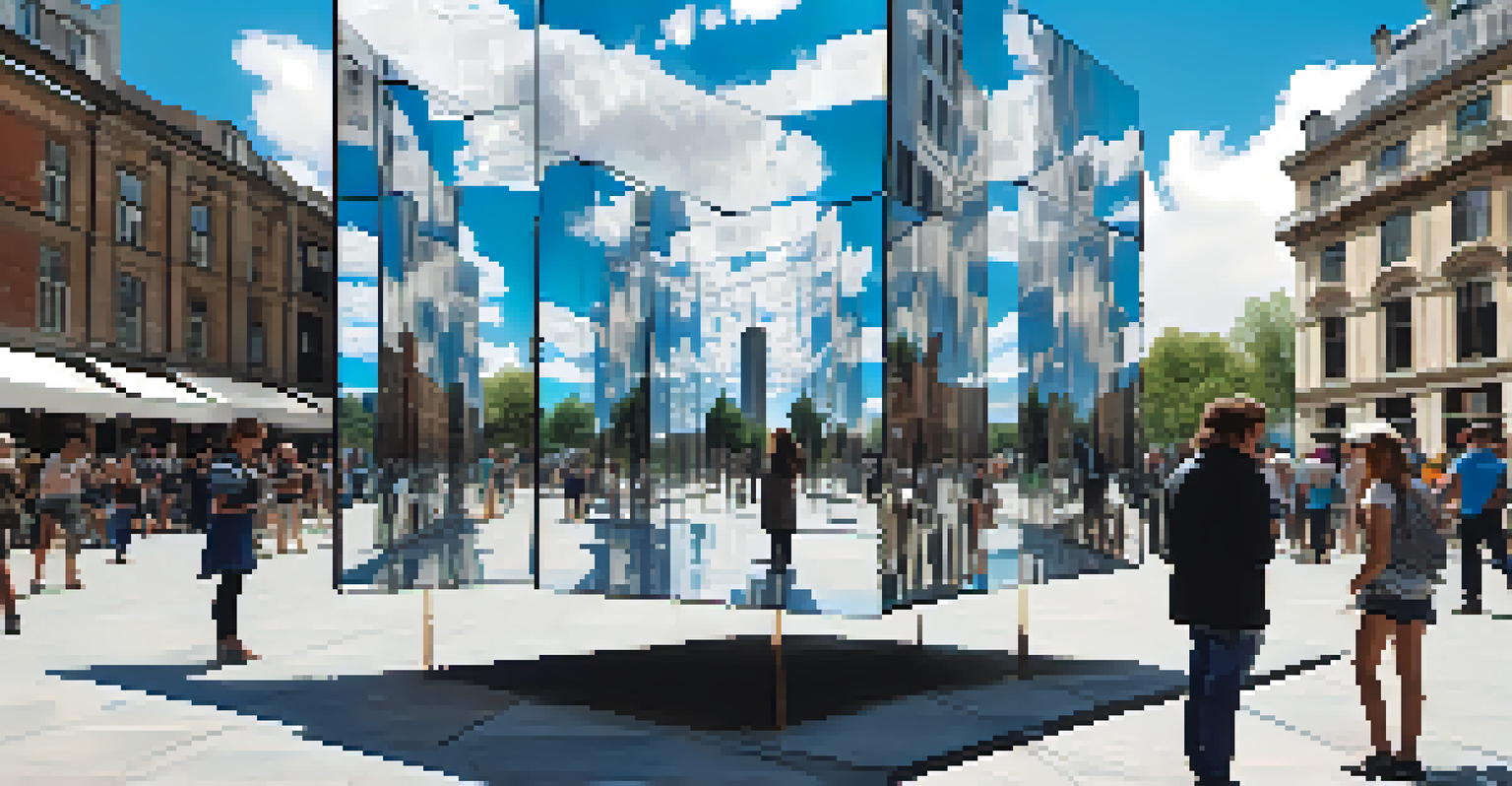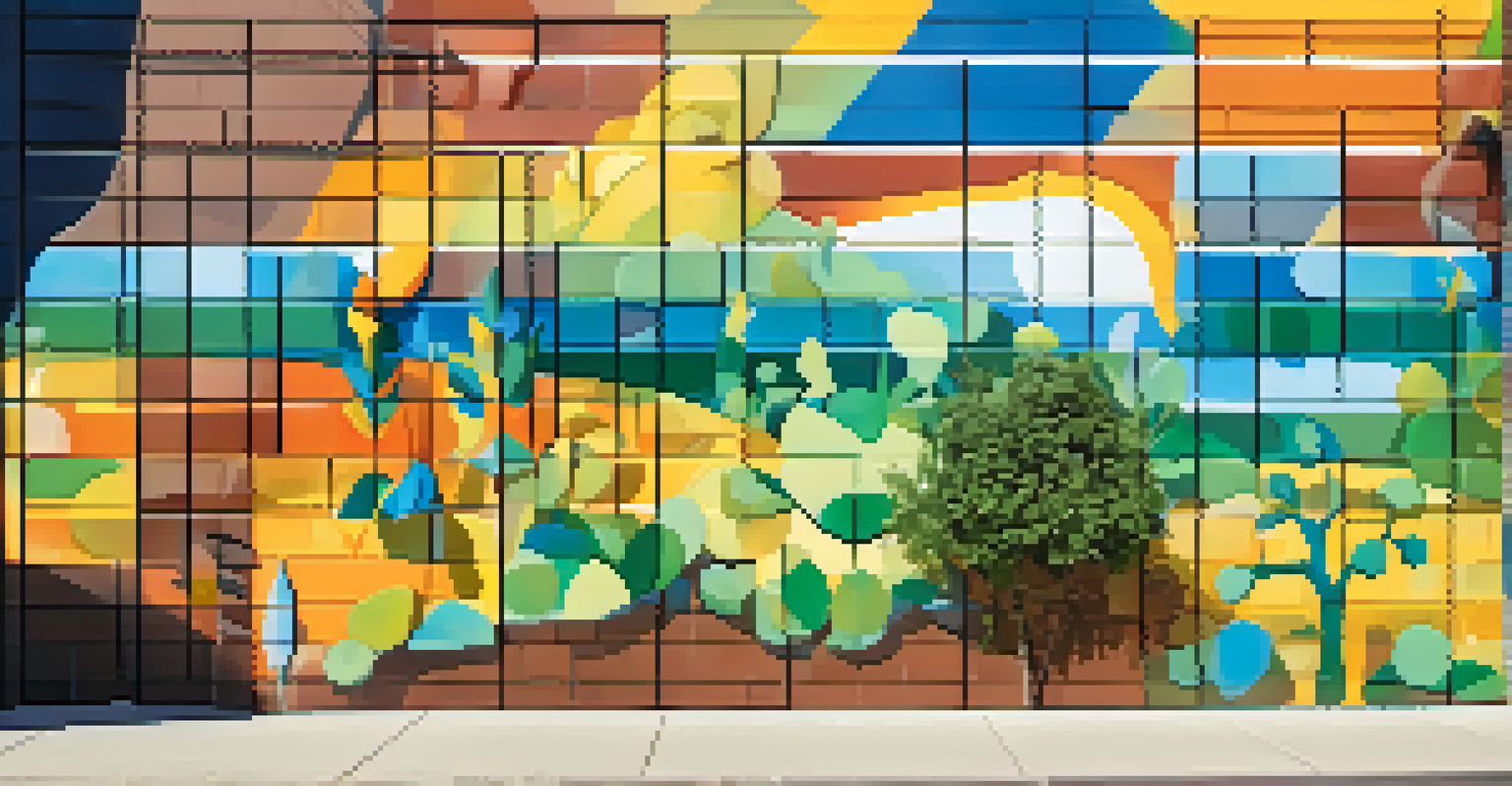Carving Materials: Analyzing Choices in Public Art Projects

Understanding the Importance of Material Selection
Choosing the right material for public art projects is crucial; it affects not only the aesthetic appeal but also the longevity and maintenance of the artwork. Artists must consider the environment where the piece will be displayed, as factors like weather and exposure can significantly impact different materials. For instance, a statue made of soft wood might deteriorate quickly in a rainy area, while durable stone can withstand the elements for decades.
The materials we choose are not just about functionality; they also convey our values and tell our stories.
Moreover, the choice of material can influence how the community interacts with the artwork. Materials that invite touch, like smooth stone or polished metal, can create a more engaging experience. On the other hand, more fragile materials might be less approachable but can convey different narratives or themes.
In essence, selecting the right carving material is about finding a balance between artistic vision and practical considerations. A good artist will evaluate both the emotional and physical aspects of their chosen medium to ensure the artwork resonates with its audience and stands the test of time.
Common Carving Materials and Their Characteristics
Public art projects often utilize a variety of carving materials, each with unique properties. Stone, for instance, is a traditional choice known for its durability and timelessness. Marble and granite are two popular options, with marble offering a classic elegance and granite providing resilience against weathering.

Wood is another common material, favored for its warmth and versatility. Artists can create intricate designs with softer woods like pine or more robust forms using hardwoods like oak. However, wood requires more maintenance, especially in outdoor settings, as it can warp or decay over time.
Material Choice Impacts Art Longevity
Selecting appropriate materials is essential for ensuring the durability and maintenance of public art in various environments.
Finally, metals such as bronze and aluminum are increasingly used in public art due to their strength and malleability. Bronze, often used for sculptures, can develop a beautiful patina over time, adding character to the piece. Aluminum is lightweight and resistant to rust, making it suitable for large installations that require structural integrity.
Balancing Aesthetics and Practicality
When choosing carving materials for public art, artists must balance aesthetics with practicality. While a stunning visual impact is essential, the material must also serve a functional purpose. For example, a vibrant ceramic piece may look fantastic but can be prone to cracking in colder climates.
Art is an experience, and the materials used can either invite participation or create barriers.
Additionally, practical considerations such as budget and availability also come into play. Some materials may be more expensive or harder to source, which can limit an artist's options. It's important to select materials that not only fit the artistic vision but are also feasible within the project's constraints.
Ultimately, the best choices are those that enhance both the visual and functional aspects of the artwork. By considering the long-term implications of their material choices, artists can create pieces that are both beautiful and sustainable.
Community Engagement and Material Choice
The choice of material in public art can significantly impact community engagement. For example, using interactive materials like glass or mirrors can invite viewers to not just observe but participate in the experience. These materials can create reflections that involve the audience in the artwork, making it more memorable.
Conversely, heavy or hard materials may create a sense of permanence and stability, which can resonate differently with the community. A stone installation might evoke feelings of tradition and history, while a lightweight fabric piece can suggest change and transience. Understanding the community's values and aesthetics can guide artists in their choice of materials.
Community Involvement Enhances Art
Engaging the community in material selection fosters a deeper connection and ensures the artwork reflects local values and aspirations.
Involving the community in the material selection process can also foster a deeper connection to the artwork. Workshops or discussions can help gather insights into what resonates with local residents, ensuring the final piece reflects their identity and aspirations.
Sustainability in Public Art Material Choices
Sustainability is becoming an increasingly important factor in public art projects, guiding artists to select materials that are eco-friendly and responsibly sourced. Using recycled materials or sustainably harvested wood can reduce the environmental impact of the artwork and promote a message of conservation. This approach not only benefits the environment but can also resonate with communities that prioritize sustainability.
Moreover, artists can use biodegradable materials that will eventually return to the earth, promoting a cycle of renewal rather than waste. For example, using natural clay can allow sculptures to decompose gracefully over time, adding a layer of meaning to the piece.
Ultimately, integrating sustainability into material choices reflects a commitment to social responsibility, which can enhance the artwork's significance within the community. By selecting materials that align with environmental values, artists can create public art that not only beautifies spaces but also fosters a deeper connection to the planet.
The Role of Technology in Material Selection
Advancements in technology have revolutionized the way artists approach material selection for public art projects. Innovations in carving tools and methods allow for more precision and creativity, enabling artists to experiment with materials that were once considered impractical. For instance, CNC (Computer Numerical Control) machines can carve intricate designs in stone and wood, allowing for greater detail and complexity.
Moreover, technology can aid in the evaluation of materials. Digital simulations can predict how various materials will perform over time under different environmental conditions, helping artists make informed decisions. This data-driven approach ensures that the selected materials will not only meet artistic goals but also withstand the test of time.
Sustainability Shapes Modern Art
Choosing eco-friendly materials shows a commitment to sustainability, enhancing the artwork's significance within the community.
By embracing technology, artists can push the boundaries of traditional carving materials and explore new possibilities. This fusion of creativity and innovation not only enhances the artistic process but also results in artwork that is more engaging and relevant to contemporary audiences.
Case Studies: Successful Public Art Projects and Their Materials
Examining specific case studies of public art projects can provide valuable insights into material selection. For instance, the 'The Gates' installation by Christo and Jeanne-Claude used bright orange fabric to create a stunning visual impact in New York's Central Park. This temporary artwork demonstrated how a material could transform an environment and engage the public in a unique way.
Another notable example is the 'Cloud Gate' sculpture in Chicago, crafted from polished stainless steel. The choice of metal not only reflects the city skyline but also invites viewers to interact with the piece, creating a dynamic relationship between the art and its surroundings. This project showcases how selecting the right material can enhance the overall experience.

These case studies illustrate the importance of thoughtful material selection in public art projects. By analyzing successful examples, artists can draw inspiration and better understand how materials can influence both the visual appeal and community engagement of their work.